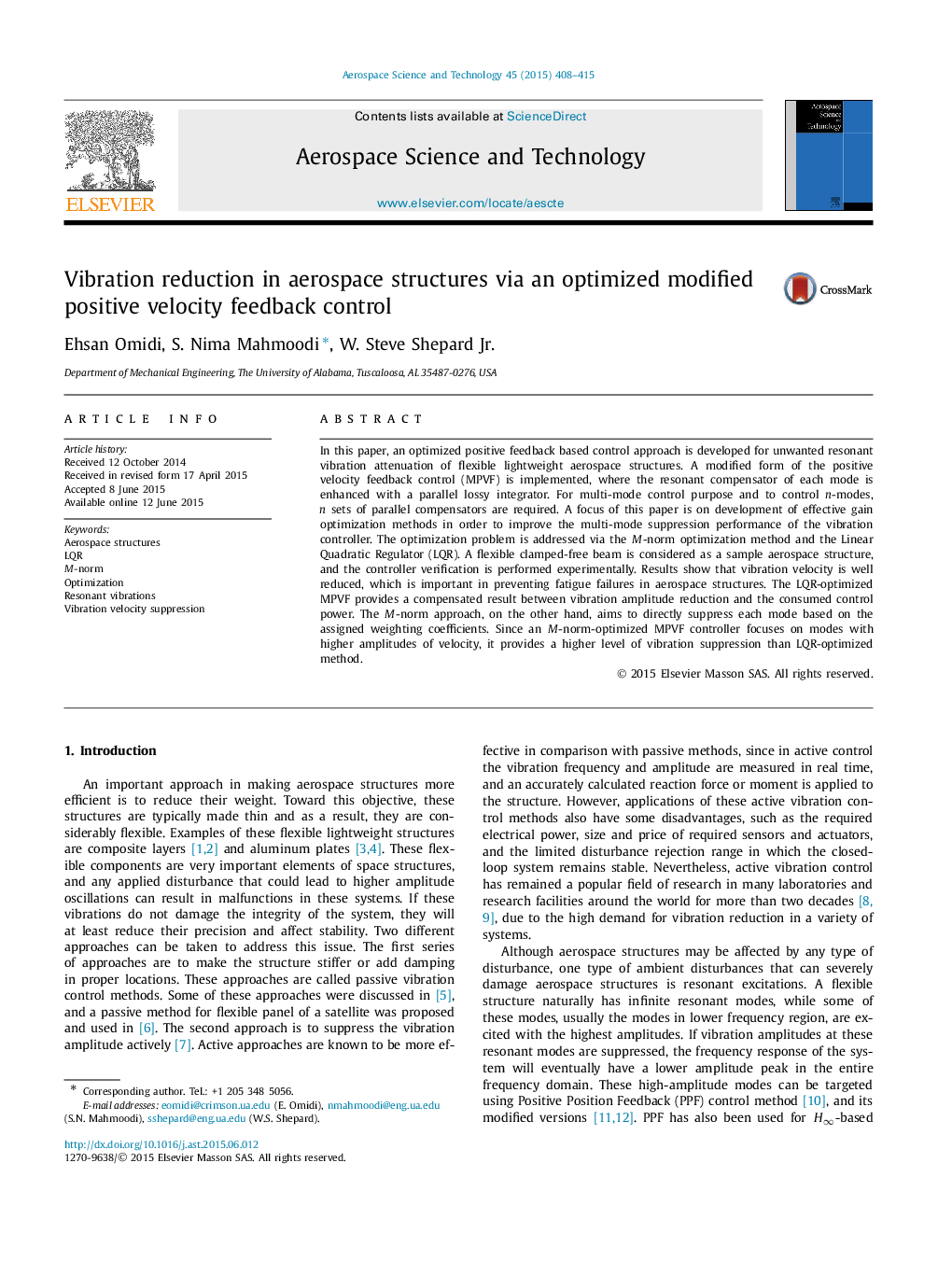| Article ID | Journal | Published Year | Pages | File Type |
|---|---|---|---|---|
| 1717828 | Aerospace Science and Technology | 2015 | 8 Pages |
In this paper, an optimized positive feedback based control approach is developed for unwanted resonant vibration attenuation of flexible lightweight aerospace structures. A modified form of the positive velocity feedback control (MPVF) is implemented, where the resonant compensator of each mode is enhanced with a parallel lossy integrator. For multi-mode control purpose and to control n-modes, n sets of parallel compensators are required. A focus of this paper is on development of effective gain optimization methods in order to improve the multi-mode suppression performance of the vibration controller. The optimization problem is addressed via the M-norm optimization method and the Linear Quadratic Regulator (LQR). A flexible clamped-free beam is considered as a sample aerospace structure, and the controller verification is performed experimentally. Results show that vibration velocity is well reduced, which is important in preventing fatigue failures in aerospace structures. The LQR-optimized MPVF provides a compensated result between vibration amplitude reduction and the consumed control power. The M-norm approach, on the other hand, aims to directly suppress each mode based on the assigned weighting coefficients. Since an M-norm-optimized MPVF controller focuses on modes with higher amplitudes of velocity, it provides a higher level of vibration suppression than LQR-optimized method.
